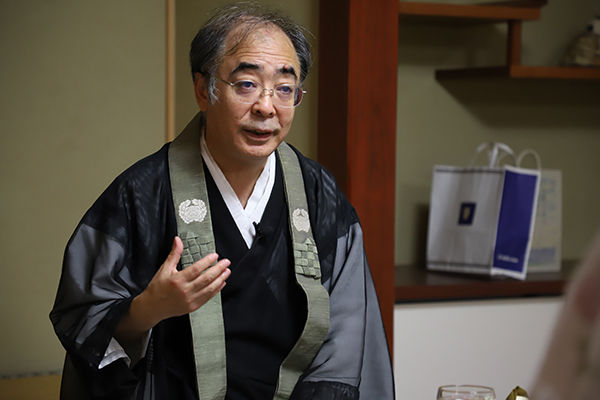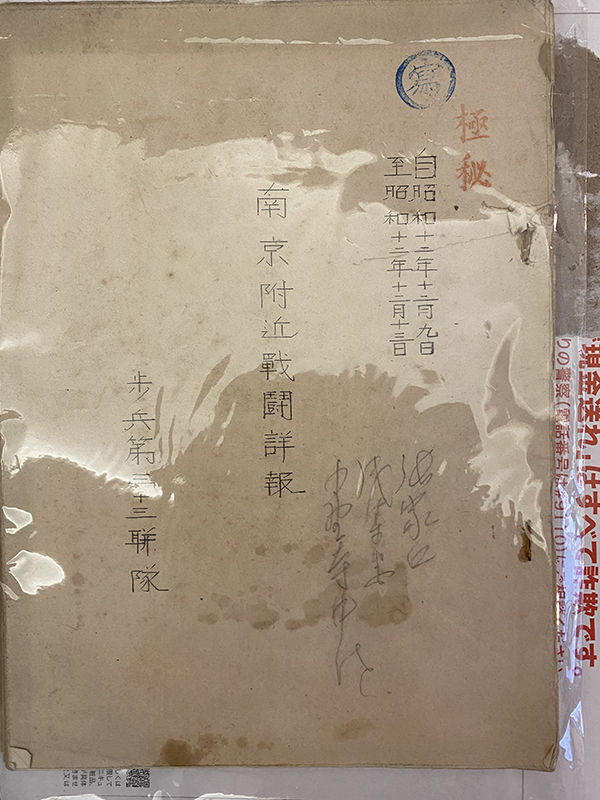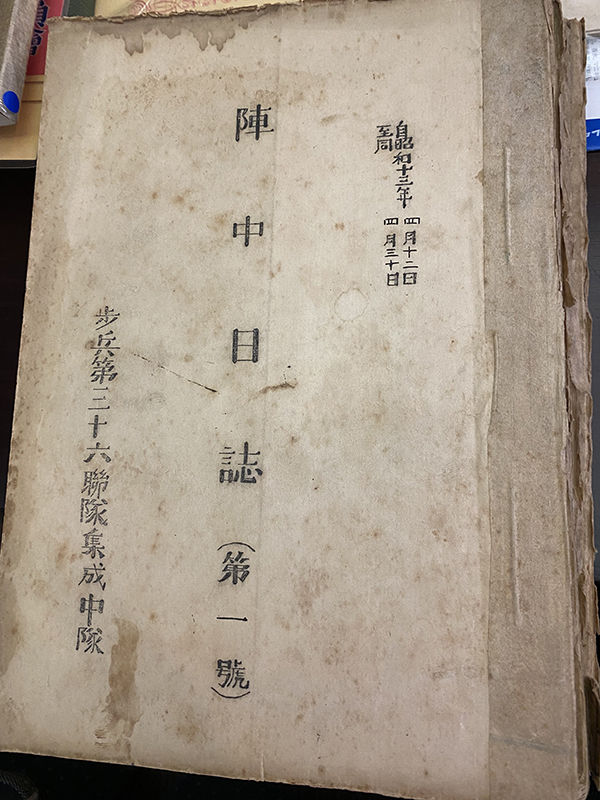By Guo Dan

An extraordinary Japanese man with a slightly thin build pulled a heavy suitcase and met with the reporter in Xinhua News Agency Tokyo Bureau one afternoon in August. "There are the Combat Report about the Nanjing Massacre recorded by the Japanese themselves, and the 7-month continuous Battlefield Log related to the Japanese invasion of Nanjing. They are the only such materials left. Please transfer them to the Memorial Hall of the Victims in Nanjing Massacre by Japanese Invaders," he said.
The suitcase is filled with almost 20 kinds of historical materials including "Top Secret, the Combat Report of the 33rd Infantry Company Near Nanjing From December 9 to December 13 of the Showa 12 (1937)" and a pile of fragile yellow papers of "The Battlefield Log of the 11th Squadron of the 36th Infantry Company" (October 1937 to April 1938).
The man in casual clothes is Daito Satoshi, the abbot of Enkoji Temple in Aichi Prefecture, Japan. He has been collecting historical materials on the Japanese invasion of China in Japan since 2005. Over the past 16 years, he has collected more than 3,000 pieces of materials and donated them to Nanjing without compensation. This time, the Combat Report and Battlefield Log were also collected through auction in Japan, commissioned by the Memorial Hall of the Victims in Nanjing Massacre by Japanese Invaders.
Because the materials are so precious that Daito Satoshi took a car from Nagoya to Tokyo in person, hoping that these precious historical materials can be sent to China as soon as possible.
"Combat Report is an official record of the Japanese army, and it is a log recorded on the same day. It is very credible. Among them, there are records of the Japanese invaders killing prisoners and setting fire in Nanjing. It can be said to have recorded very clearly the history of the Nanjing Massacre committed by the Japanese army. The Nanjing Massacre is not a fiction, nor a lie!" he said.
"There are some people in Japan who do not recognize the fact of the Nanjing Massacre, but these precious materials are true evidence! Although it is only a record of a 200-member troop, it can clearly show how many prisoners they killed in one single day. There should be many similar units in the process of invading Nanjing and I will continue to search for the undiscovered Combat Report," said Daito Satoshi.
Why would a Japanese monk insist on collecting historical materials on the Japanese invasion of China for China? Daito Satoshi explained why to our reporter at Enkoji Temple in Nagoya.
Daito Satoshi was born in Aichi Prefecture in 1965 and graduated from the History Department, Faculty of Letters of Nara University. "I studied history in university, so I want to know the truth about the Japanese war of aggression against China. From the perspective of historical research, I can't just refer to books. Instead, I have to do more field investigations and experience."
He went to Northeast China for a one-month investigation at the age of 20. He visited the Hushigou Massacre Memorial Hall in Yingkou and the Pingdingshan Massacre Memorial Hall in Fushun, northeast China's Liaoning Province, the site of Unit 731 of the Japanese Invaders in Harbin, northeast China's Heilongjiang Province, and the Fengman Massacre Site in Jilin Province.
"I was impressed with everything during my trip to China. But what struck me most was the Pingdingshan Massacre Memorial Hall. The entire village was killed and there were remains of old people and babies. It turned out that the aggression was so cruel! The shock I felt is still unforgettable. I made up my mind at that time that I must do something!"
After returning from China, Daito Satoshi began to focus on collecting evidence related to the Japanese invasion of China, conducting more comprehensive and in-depth research on the war of aggression against China, and exposing and criticizing the war crimes of the aggressors.
When asked whether he would be attacked by the Japanese right-wingers for collecting historical materials on the Japanese aggression against China and exposing war crimes, he said that his sect has held a peace exhibition in Nagoya every March for 32 consecutive years. At the peace exhibition, some right-wingers would shout "there is no Nanjing Massacre" and rudely argue with him. Daito Satoshi would not evade or quarrel, but would calmly show them evidence such as Combat Report. The attitude of right-wingers has changed a lot as a result of "speaking with evidence".
Daito Satoshi said: "For so many years, they are slowly learning history and start to have a minimum of respect for me, although only a little bit. I also regard long-term dialogue with them as my job. I will read materials about the Nanjing Massacre every year before they come so I can answer their sharp questions more accurately. I also hope that I can learn more and tell more people about historical facts more comprehensively and accurately."
Now, the precious materials that Daito Satoshi handed over to the Memorial Hall of the Victims in Nanjing Massacre by Japanese Invaders have been safely transported to China by Spring Airlines. After learning the news, Daito Satoshi said: "I will continue to collect these historical materials in the future. I will keep doing it as long as I can move."
















